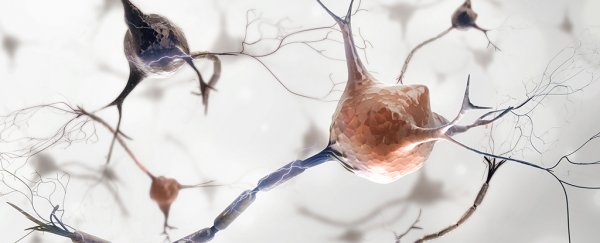Male and female mouse brains could have significant differences that reach right down to the cellular level, according to a new discovery.
Based on a reading of their genetic activity, neurons in a part of the mouse nervous system responsible for aggression and mating behaviours appear to be chemically structured in subtle but distinctly different ways between the two sexes.
These findings haven't been tested in other mammal species as yet, so we can't read too much into them. But it's a fascinating study that warrants further investigation in the brains of other animals.
Researchers from the California Institute of Technology and the Allen Institute for Brain Science in Seattle looked at a region of the brain called the ventrolateral subdivision of the ventromedial hypothalamus (VMHvl) in both male and female mice.
The VMHvl is tiny, made up of a mere 4,000 cells in mice, but still has quite a schedule on its hands, playing an important role in metabolism and complex sexual and social behaviours.
To identify cell types in the region, the researchers used single cell RNA reading technology, which identifies genes that have been actively translated into RNA.
This is important, because while a species' full genome is kept in the nucleus of each cell, only a limited number of these genes will actually be expressed into proteins that meet the needs of the specific cell type. For example, a blood cell has different needs and therefore will activate different genes than a skin cell.
This technology provided the scientists with a snapshot of the 'books' being read in each cell's genetic library, giving them a clear idea of how each cell's individual physical make-up and activity differs.
Cells are considered to be of a certain type if clusters of genes in close proximity are expressed together to carry out a task.
In total the team identified 17 distinct types of brain cells in this tiny bit of brain tissue, which they then verified using glowing genetic tags in a process called fluoro in-situ hybridisation.
While that might sound like a lot of brain cell types, uncovering such a level of diversity shouldn't be all that surprising. Similar research has already identified scores of cell types across the entire hypothalamus.
What hadn't been seen before – in mammals, at least – were clear differences in neuron types between the male and female brains they analysed.
Some of these cell types were found in vastly greater numbers among mice of one gender or the other. One in particular was already known to make an enzyme that was present only in male mouse brains.
But another newly identified cell type was specific to female mice, not being found at all in male mice.
Importantly, these differences weren't a direct result of contrasting sex chromosomes, with the distinct brain cell types traced back to patterns of genes on parts of the genome both sexes possess.
Having genes that are generally active in one sex but not the other is hardly shocking. The small but significant leap in this case is finding clusters of activity large enough in brain cells to make them physically different types.
One thing that did come as a surprise was that only a few of these specific variations seemed to match specific behaviours, posing questions on just what it is many of these gender-biased cell types do.
"The results show that there are differences between male and female mammalian brains at the level of cellular composition as well as gene expression but that those differences are subtle, and their functional significance remains to be explained," says California Institute of Technology biologist, David Anderson.
It's a conclusion that's sure to polarise opinions on what is already a controversial topic. Research on the culture and biology of human gender is a divisive topic marked by a history of stereotypes and misinformation
On top of that, it's difficult to know how studies on lab animals might apply to humans. We're unlikely to be unique, but it's an assumption that would require further research to support.
Treading cautiously, studies like this one can't be dismissed out of hand either.
Like mice, there's a good chance our own brains not only promote different behaviours depending on whether we have a Y chromosome, but have fundamentally different cell types that just might be responsible for sex-specific functions.
That doesn't mean men are from Mars and women are from Venus. Genetics is complicated, and while we can generalise based on patterns, it doesn't dismiss the significance of individual variations or cultural influences.
Technology that can provide a detailed library list of genes being actively read in individual cells is changing what we know about everything from mental health to evolution to our own developing bodies.
We're almost certain to be surprised by just how diverse human biology can be.
This research was published in Cell.
